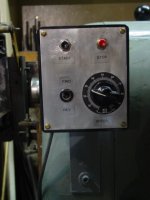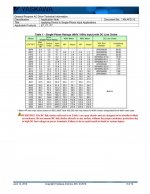Hi there,
I am currently doing a complete rebuild of my 1965 Colchester Student lathe and have no idea about electrics. I have attached photos of the motor and badge (hopefully). My understanding is that this is the original 3ph two speed motor which I need to run off my domestic 240v home supply. I'm willing to spend the money on a good VFD but am getting a bit confused about how to tie it all in with the levers for this model among other things. Does anyone run this model with a VFD?


Any help will be greatly appreciated.
Sorry for the upside down photos.
I am currently doing a complete rebuild of my 1965 Colchester Student lathe and have no idea about electrics. I have attached photos of the motor and badge (hopefully). My understanding is that this is the original 3ph two speed motor which I need to run off my domestic 240v home supply. I'm willing to spend the money on a good VFD but am getting a bit confused about how to tie it all in with the levers for this model among other things. Does anyone run this model with a VFD?



Any help will be greatly appreciated.
Sorry for the upside down photos.







